The Expo Osaka, Kansai has begun. Expos are often called mirrors reflecting human activities. What aspects might visitors focus on as they tour the venue? Among the natural resources humans have utilized, wood and water make their presence felt through the circular Grand Ring and the Osaka Bay coastal location with water shows. Everyone experiences the Expo in their own way. So, I decided to explore the venue while being conscious of stones*, another important natural resource.
* A wordplay on "ishiki" (conscious) and "ishi" (stones).
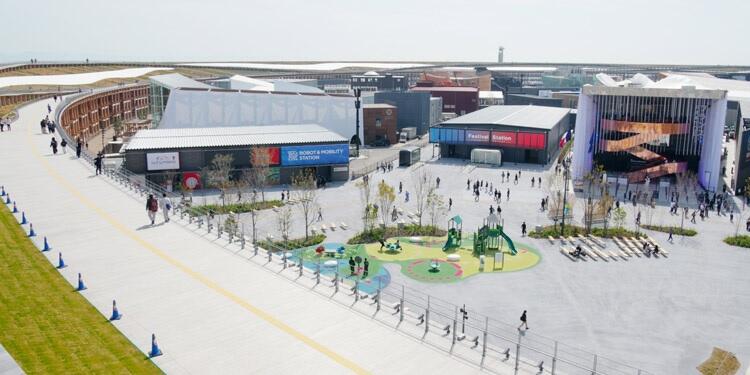
Artful and mysterious resonance experience
"Hold it with your thumb and index finger and lightly place your remaining fingers on it." When visiting the "Better Co-Being" Pavilion—which stands out for its lack of a roof in the middle of the venue—visitors are loaned a fist-sized, stone-like device and given instructions on how to use it. When the guide operates it wirelessly, the visitor's stone vibrates, and the hand holding it experiences a pulling sensation, moving forward, backward, side to side, and rotating.

This stone is the "Wonder Stone, echorb" from the electronic components giant Murata Manufacturing. It uses "3D haptic technology" that creates illusions in the brain through special vibrations, expressing various tactile sensations and resistances, making users feel as if they are being pulled or pushed in relation to the surrounding space.
Invited by the guide, I toured the art exhibits while holding the echorb. The system works with 520 antennas installed underground that track the echorb's position and respond to visitors' movements and art appreciation. Though I had difficulty feeling it during my limited time, it reportedly even reads heart rates. Connecting with visitors' smartphones is also unique. Through the echorb, I had a strange experience where my heart seemed to connect with the artwork, heightening my senses.
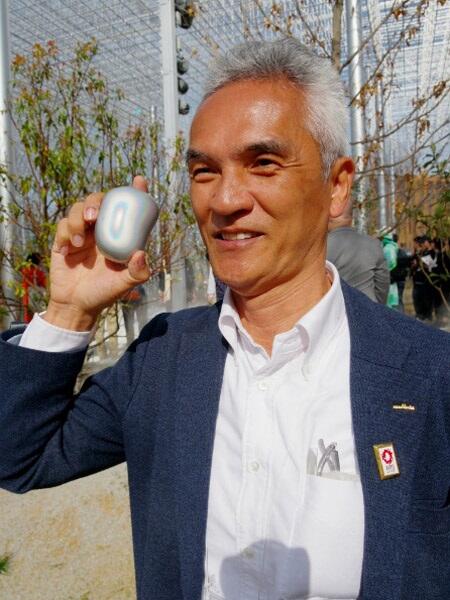
Masamichi Ando, Vice President and General Manager of the Business Incubation Center, Corporate Technology & Business Development Unit of the company, proudly told the interviewer, "3D haptic technology creates a resonance experience in your body, beyond just seeing and hearing exhibits. When you approach an artwork and the echorb moves, it creates a completely different sensation than merely looking. We've packed Murata's technology into it. As they say, "'Feeling' is believing"—you'll understand once you come and try it yourself."
With many people experiencing the echorb at the Expo, new ideas for using 3D haptic technology that even professional engineers never imagined might emerge.
From Mars to Osaka via Antarctica
One of the highlight exhibits at this Expo is "one of the largest rocks from Mars." It's located in the Japan Pavilion near the East Gate, outside the Grand Ring. At the 1970 Osaka Expo, the moon rock brought back by Apollo 12 at the American Pavilion reportedly had lines over four hours long on some days. However, humans have not yet reached Mars. This exhibit is not directly brought back from Mars, but is a meteorite that fell on Antarctica from the planet.
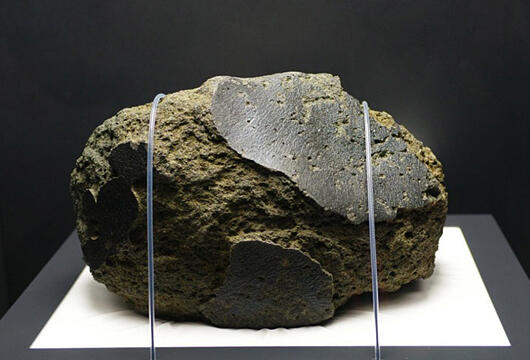
According to government documents, Japan's Antarctic expedition team discovered it in November 2000 in the "Yamato Mountains," 350 kilometers from Syowa Station. It's the size of a rugby ball and weighs 13 kilograms. While most meteorites found are only a few centimeters in size, this one stood out for its exceptional size, with its green color contrasting strikingly against the white ice. It was carefully transported while frozen and arrived in Japan in May of the following year. Named "Yamato000593," it is housed at the National Institute of Polar Research.
So, how was it determined to be of Martian origin? There are three pieces of evidence: (1) The presence of uniformly shaped mineral structures suggests it came from a celestial body with certain gravity. (2) It was determined that the rock formed 1.3 billion years ago, suggesting a larger celestial body with prolonged volcanic activity. (3) The components of air trapped inside nearly match the atmospheric components analyzed by U.S. Mars landers. This third point is said to be the decisive evidence.
This meteorite is believed to have been ejected into space 13-10 million years ago when an asteroid impacted Mars, then drifted until by some chance it fell on Antarctica tens of thousands of years ago. Antarctica is considered the place on Earth where meteorites are most commonly found. This is due to a mechanism whereby fallen meteorites move with the ice sheet, accumulate after being blocked by mountain ranges, and are gradually pushed up.
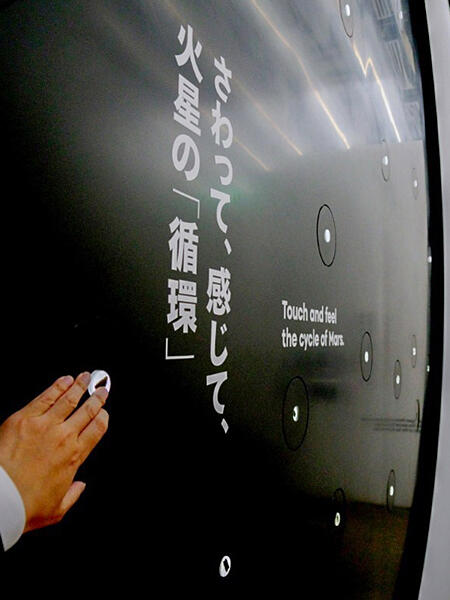
Because it contains clay minerals, it serves as important evidence that water once existed on Mars. This is the first time it has been widely exhibited to the general public. Water is essential for life, making this exhibit relevant to the Expo's theme of "life."
On the wall to the front-left of this meteorite is a corner where visitors can directly touch a small Martian meteorite—definitely worth touching as a memory. Since the surface feels smooth, I asked a staff member if it was coated and not actually directly touchable. They replied, "I thought so too, but apparently we are touching it directly." It's probably well-polished to prevent finger injuries.
The Japan Pavilion also exhibits samples brought back to Earth by the Japan Aerospace Exploration Agency (JAXA)'s asteroid explorers "Hayabusa" and "Hayabusa2."
Feeling the history of Osaka Castle's reconstruction
The "Regrettable Stone Toilet" also attracted attention before the opening. It's located on the western side inside the Grand Ring, in front of the Romanian Pavilion. According to the on-site display, "regrettable stones" (zannenishi) are stone materials that were quarried for castle construction but remained unused. The stones for this toilet were quarried in what is now Kizugawa City, Kyoto Prefecture, about 400 years ago for the stone walls of Osaka Castle's reconstruction. They are thought to have been managed as reserve stockpile stones. This toilet utilizes these stones—which regrettably couldn't become part of the castle—as pillars, transcending time.
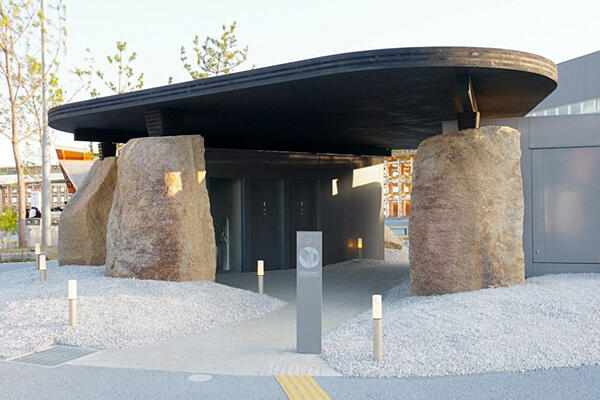
Osaka Castle was built by Toyotomi Hideyoshi but fell in the 1615 Summer Siege of Osaka. Under the orders of the second Tokugawa shogun, Hidetada, it was reconstructed over a ten-year period starting in 1620. Having been destroyed by lightning and the turmoil of the Meiji Restoration, the current main tower is the third version, restored in the early Showa period (1930s).
There have been objections to using historically valuable items as toilet pillars. On the other hand, one can sense the enthusiasm of those involved who want to shine a light on dormant historical heritage through the Expo. Whether this use is truly "regrettable" or not seems to be a matter of perspective.
As a side note, while photographing the toilet's exterior, I heard a surprised "Oh!" from a man nearby. He turned out to be a friend, a journalist from another company who had been transferred to Osaka. That I, visiting from Tokyo, could reunite with him seems to me like the mysterious power of the stones. Far from "regrettable," these are "stones of great gratitude."
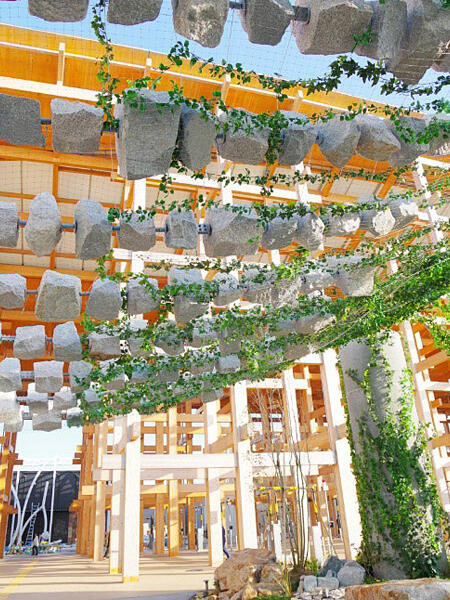
Also attracting interest is the "Stone Pergola" at a rest area in the northwest of the venue, just outside the Grand Ring. A pergola refers to structures like grape trellises, wisteria trellises, or trellises that provide shade. This one suspends numerous stones with holes drilled through them, connected by cables. According to materials, it utilizes stones from Setouchi as sunshades. After the Expo closes, these stones will be used to improve depressions in Osaka Bay and create habitats for marine life, "passing them on to the future as assets of the sea."
When the plan was revealed, there were successive voices of concern about safety regarding the placement of numerous stones overhead. In response, last September, the designer explained on social media that the pergola's structure, the strength of the stones, the method of drilling holes, and safety verification against strong winds and earthquakes were all sufficient.
What each person takes away is different
Focusing on stones while touring the venue provided moments to appreciate cutting-edge technologies with exciting future applications, as well as space and Japanese history. Though the Expo's official theme is "Designing Future Society for Our Lives," how one spends time there and what one focuses on should be up to each individual. The above was reported during the press preview just before the opening. During the Expo period, there are many exhibits and events that require reservations, so visitors should plan to move at a comfortable pace amid the crowds.
By the way, the next day, I personally visited the "EXPO '70 Pavilion" and "Tower of the Sun" at the Expo '70 Commemorative Park in Suita City to experience a simulation of the Osaka Expo held just before I was born. I was deeply moved by how this event was realized through society's strong will (here again, in Japanese "will" = "ishi"!) during a time when the country was full of hope and vitality. If you're visiting Osaka for the Expo, I highly recommend it.
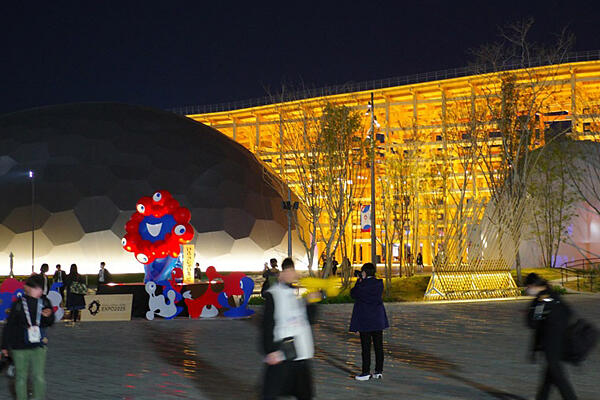
(KUSAKA Takeo / Science Portal Editorial Office)
Original article was provided by the Science Portal and has been translated by Science Japan.




